
The Jewel of the Elbe
Discover Dresden: A city of resilience and beauty, where Baroque architecture meets vibrant arts and lush green spaces.
Dresden, the capital of Saxony, is a city brimming with history and culture. Nestled along the banks of the Elbe River, Dresden is often called the 'Florence of the North.' This is due to its stunning Baroque architecture and vibrant art scene. The city’s history is both glorious and tragic. It was heavily bombed during World War II, but has since risen from the ashes. Today, it stands as a testament to resilience and beauty. Visitors to Dresden can marvel at the rebuilt Frauenkirche, a symbol of reconciliation and peace. The Zwinger Palace is another must-see, with its splendid gardens and grand pavilions. Art lovers will find joy in the Old Masters Picture Gallery, which houses works by Raphael, Rembrandt, and Vermeer. Nature enthusiasts will love the city’s many parks and green spaces, including the Great Garden, a perfect spot for a leisurely stroll. The Elbe River offers opportunities for boat tours, providing a unique view of the city’s stunning skyline. Dresden also boasts a lively culinary scene, with traditional Saxon dishes and international cuisine. Whether you are an art aficionado, history buff, or nature lover, Dresden offers something for everyone. Its mix of old-world charm and modern amenities makes it an unforgettable destination.
Local tips in Dresden
- Visit the Frauenkirche early in the morning to avoid crowds.
- Take a guided tour of the Zwinger Palace to fully appreciate its history and architecture.
- Try the local dish 'Sauerbraten' at a traditional Saxon restaurant.
- Rent a bike to explore the extensive bike paths along the Elbe River.
- Check the schedule for concerts at the Semperoper, one of the most beautiful opera houses in the world.
- Visit the Neustadt district for a taste of Dresden’s modern, bohemian culture.
Neighbourhoods in Dresden
The Jewel of the Elbe
Dresden, the capital of Saxony, is a city brimming with history and culture. Nestled along the banks of the Elbe River, Dresden is often called the 'Florence of the North.' This is due to its stunning Baroque architecture and vibrant art scene. The city’s history is both glorious and tragic. It was heavily bombed during World War II, but has since risen from the ashes. Today, it stands as a testament to resilience and beauty. Visitors to Dresden can marvel at the rebuilt Frauenkirche, a symbol of reconciliation and peace. The Zwinger Palace is another must-see, with its splendid gardens and grand pavilions. Art lovers will find joy in the Old Masters Picture Gallery, which houses works by Raphael, Rembrandt, and Vermeer. Nature enthusiasts will love the city’s many parks and green spaces, including the Great Garden, a perfect spot for a leisurely stroll. The Elbe River offers opportunities for boat tours, providing a unique view of the city’s stunning skyline. Dresden also boasts a lively culinary scene, with traditional Saxon dishes and international cuisine. Whether you are an art aficionado, history buff, or nature lover, Dresden offers something for everyone. Its mix of old-world charm and modern amenities makes it an unforgettable destination.
When is the best time to go to Dresden?
Iconic landmarks you can’t miss
Zwinger
Discover the grandeur of the Zwinger, a Baroque masterpiece in Dresden, rich in art and history, perfect for every traveler seeking cultural immersion.

Frauenkirche Dresden
Explore Frauenkirche Dresden, a stunning Baroque church symbolizing resilience, offering breathtaking views, rich history, and stunning architecture in the heart of the city.

The Grand Garden of Dresden
Discover the serene beauty of the Grand Garden of Dresden, a lush green space filled with historical charm and vibrant gardens, perfect for relaxation and exploration.

Semperoper Dresden
Explore the stunning Semperoper, a cultural jewel of Dresden, offering world-class performances in an architectural masterpiece.

Brühl's Terrace
Experience stunning views and rich history at Brühl's Terrace, Dresden's iconic 'Balcony of Europe' and a must-visit destination for every traveler.

Dresden Castle
Discover the rich history and exquisite art of Dresden Castle, a UNESCO World Heritage site that showcases the grandeur of Saxon royalty in Germany.

Golden Rider
Discover the Golden Rider, a stunning Baroque monument in Dresden, symbolizing the city's rich history and artistic heritage amidst vibrant Neustadt.

German Hygiene Museum
Explore the fascinating intersection of health, science, and art at the German Hygiene Museum in Dresden, a unique cultural gem for all ages.

Old Masters Picture Gallery
Explore the Old Masters Picture Gallery in Dresden, showcasing European masterpieces from the 13th to 18th centuries in a breathtaking setting.

Green Vault
Explore the opulent treasures of the Green Vault in Dresden, a historical gem showcasing exquisite craftsmanship and rich artistic heritage.

Dresden Transport Museum
Discover the evolution of transportation at the Dresden Transport Museum, where history meets technology in an engaging and interactive setting.

Dresden Panometer
Explore captivating panoramic art at the Dresden Panometer, a unique museum that brings history and culture to life through immersive experiences.

Fürstenzug
Discover the Fürstenzug in Dresden, a stunning mural showcasing the history of Saxony's rulers through exquisite porcelain artistry.

Kathedrale Sanctissimae Trinitatis
Experience the stunning architecture and rich history of Dresden's Kathedrale Sanctissimae Trinitatis, a must-visit landmark for all tourists.

Festung Xperience (Festung Dresden)
Explore the captivating history of Dresden at Festung Xperience, a museum that immerses visitors in the region's rich past and stunning river views.

Unmissable attractions to see
Dresden Zwinger
Explore the stunning Baroque architecture and rich art collections at Dresden Zwinger, a historical landmark and cultural gem in Germany.

Frauenkirche Dresden
Explore the architectural splendor and historical significance of Frauenkirche Dresden, a symbol of resilience in the heart of the city.

Königstein Fortress
Explore Königstein Fortress, a historical marvel offering breathtaking views and rich military history in the heart of Saxon Switzerland.

Moritzburg Castle
Discover the breathtaking Moritzburg Castle, a baroque masterpiece surrounded by serene lakes and lush forests, rich in history and culture.

Bastei Bridge
Discover the breathtaking Bastei Bridge in Saxon Switzerland, a stunning historical landmark offering spectacular views and rich natural beauty.

Bohemian Switzerland National Park
Discover the stunning landscapes and adventure of Bohemian Switzerland National Park, a must-visit destination for nature lovers and outdoor enthusiasts.

The Grand Garden of Dresden
Discover the serene beauty of The Grand Garden of Dresden, a lush urban oasis filled with history, nature, and vibrant culture.
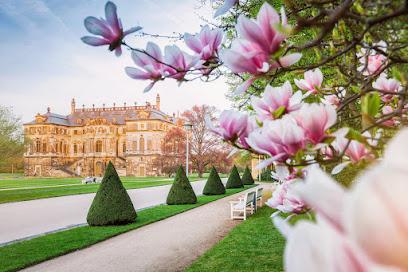
Zoo Dresden
Explore Zoo Dresden, a captivating animal park in the heart of Dresden, offering a unique blend of wildlife encounters and family-friendly activities.

Semperoper Dresden
Experience the grandeur of the Semperoper Dresden, a stunning opera house offering world-class performances in a historic setting.
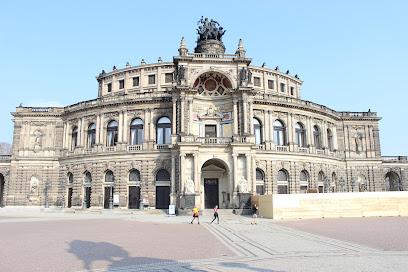
Pravčická Archway
Explore the breathtaking Pravčická Archway, Europe’s largest natural sandstone arch, nestled in the stunning landscapes of Hřensko, Czech Republic.

Brühl's Terrace
Discover the breathtaking views and historical charm at Brühl's Terrace, a must-visit landmark in Dresden, Germany.

Pillnitz Castle
Discover the enchanting Pillnitz Castle, where Baroque architecture meets stunning botanical gardens along the Elbe River.

Golden Rider
Discover the Golden Rider in Dresden, a stunning equestrian statue that embodies the city's rich history and artistic heritage.

Saxon Switzerland National Park
Explore the breathtaking landscapes of Saxon Switzerland National Park, a natural wonder offering stunning rock formations, lush forests, and endless hiking adventures.
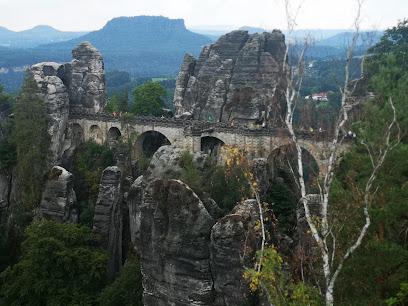
Albrechtsburg Castle
Explore Albrechtsburg Castle in Meissen, Germany - a stunning medieval fortress with rich history, breathtaking views, and captivating exhibitions.

Essential places to dine
HANS IM GLÜCK - DRESDEN Altmarkt
Discover gourmet burgers at HANS IM GLÜCK - DRESDEN Altmarkt; where taste meets style in the heart of Dresden.

Schwerelos – Das Achterbahn-Restaurant
Discover the thrill of dining at Schwerelos – where rollercoasters meet German cuisine in a family-friendly atmosphere.

Kutscherschänke - Uriges Wirtshaus
Experience authentic German cuisine at Kutscherschänke in Dresden – where tradition meets warmth in every bite.

L'Osteria
Experience authentic Italian cuisine at L'Osteria in Dresden's Altstadt—delicious pizzas and warm hospitality await.

Sophienkeller im Taschenbergpalais
Experience authentic German cuisine in an elegant setting at Sophienkeller im Taschenbergpalais - where history meets culinary delight.

Restaurant Carolaschlösschen Dresden
Discover the charm of German cuisine at Restaurant Carolaschlösschen in Dresden – where culinary delights meet vibrant live entertainment.

Augustiner an der Frauenkirche Restaurant
Discover the flavors of Bavaria at Augustiner an der Frauenkirche—an enchanting restaurant near Dresden's historic Frauenkirche.

Pulverturm
Experience traditional German cuisine at Pulverturm, a historic restaurant near Frauenkirche offering delightful dishes and an inviting atmosphere.

Coselpalais - Restaurant & Grand Café
Discover culinary excellence at Coselpalais Restaurant & Grand Café in Dresden—where history meets exceptional European and Mediterranean flavors.

DRESDEN 1900 Museumsgastronomie
Savor exquisite dishes inspired by history at Dresden 1900 Museumsgastronomie near Frauenkirche - a must-visit culinary gem.

Aposto Dresden
Experience authentic Italian cuisine at Aposto Dresden – where traditional flavors meet modern elegance in a vibrant setting.

edelweiss - Alpenrestaurant
Discover the authentic taste of Switzerland at Edelweiss - Alpenrestaurant in Dresden's historic Altstadt district.

Gänsedieb
Experience authentic German flavors at Gänsedieb, a top-rated restaurant in Dresden's historic Altstadt.

Restaurant brennNessel Dresden
Experience innovative vegetarian cuisine at Restaurant brennNessel in Dresden's historic Altstadt – where every meal is a celebration of flavor.
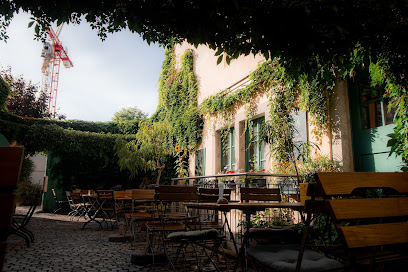
Dresdner Trödelschänke
Discover authentic Saxon cuisine at Dresdner Trödelschänke in Dresden's Altstadt—a delightful fusion of tradition and modernity awaits.

Markets, malls and hidden boutiques
Altmarkt-Galerie Dresden
Discover a shopping paradise at Altmarkt-Galerie Dresden with diverse shops, delightful dining, and a vibrant atmosphere in the heart of the city.

Centrum Galerie Dresden
Explore the diverse shopping and dining experiences at Centrum Galerie Dresden, where every visit promises excitement and discovery.

Elbepark
Discover Elbepark in Dresden, a vibrant shopping mall offering a variety of stores, dining options, and a lively atmosphere for all visitors.

QF Passage Dresden
Discover the elegance of QF Passage Dresden, where luxury shopping meets cultural charm in the heart of the city.

Kugelhaus am Wiener Platz
Discover the architectural wonder of Kugelhaus am Wiener Platz, a unique shopping mall in Dresden offering a blend of modern design and vibrant shopping.

Lindt Boutique Dresden
Experience the exquisite world of chocolate at Lindt Boutique Dresden, where every bite is a moment of pure indulgence.

LUSH Cosmetics Dresden
Explore LUSH Cosmetics Dresden for a captivating selection of eco-friendly beauty products, bath essentials, and unique gifts in a vibrant atmosphere.

Elbenwald
Discover a treasure trove of unique gifts and pop culture merchandise at Elbenwald in Dresden's Altmarkt Galerie, perfect for fans and tourists alike.

Abaddon Mystic Store - Gothic & Metal Store
Explore the gothic and metal fashion scene at Abaddon Mystic Store in Dresden, where individuality meets alternative style through unique clothing and accessories.
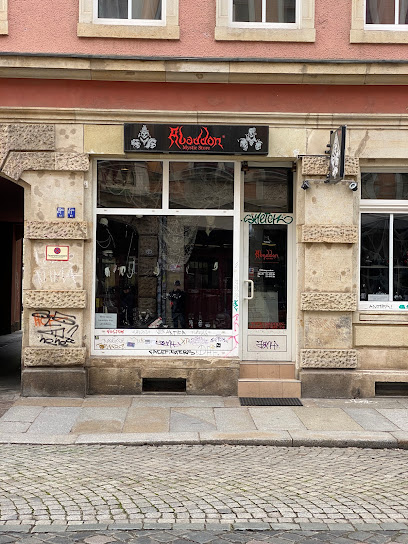
Hollister Co.
Explore the laid-back California style at Hollister Co. in Dresden, your ultimate destination for trendy fashion and accessories.
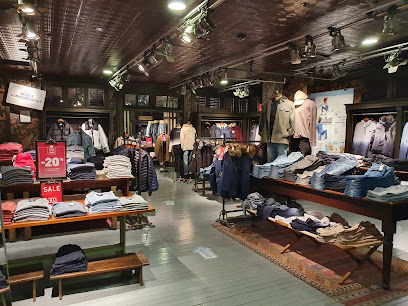
LADY YULE - The Vintage Spirit Store
Explore the charm of vintage fashion at Lady Yule, Dresden's premier vintage spirit store offering unique clothing and accessories.

Flying Tiger Copenhagen
Explore the delightful and affordable gift options at Flying Tiger Copenhagen in Dresden, a whimsical shopping destination for unique finds.

BOSS Store Dresden
Discover contemporary elegance and style at BOSS Store Dresden, a premier shopping destination for fashion enthusiasts.

Tradition & Form - Wendt und Kühn Fachhändler
Explore Tradition & Form - Wendt und Kühn, a charming gift shop in Dresden, offering handcrafted antiques, Christmas decor, and enchanting music boxes.

Kunsthandwerk in der Altmarkt-Galerie
Discover unique handcrafted gifts and souvenirs at Kunsthandwerk in der Altmarkt-Galerie, a treasure trove of local artistry in Dresden.

Essential bars & hidden hideouts
Shamrock Irish Bar & Restaurant
Discover the vibrant atmosphere of Shamrock Irish Bar & Restaurant in Dresden, where authentic Irish cuisine meets friendly service and lively entertainment.

BBC – Bar Brasserie Cassis - Dresden
Discover the lively ambiance and diverse drink selection at BBC – Bar Brasserie Cassis, a must-visit bar in Dresden for travelers seeking a local experience.
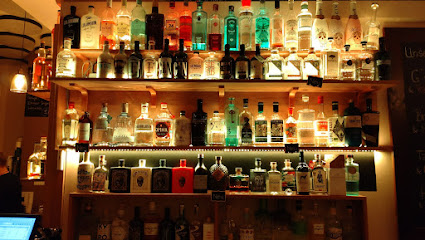
Newtown Bar
Discover the lively Newtown Bar in Dresden, a perfect spot for drinks, sports, and socializing in a vibrant atmosphere.

SonderBar
Experience Dresden's nightlife at SonderBar, known for its unique cocktails and welcoming atmosphere, perfect for all social occasions.

Bar 1705 - Dresden
Experience the luxurious ambiance of Bar 1705 in Dresden, where exquisite cocktails meet an unforgettable night out in the heart of the city.
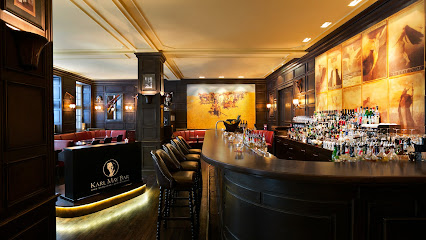
Gin House Dresden
Discover the charm of Gin House Dresden, where over 200 gins await to tantalize your taste buds in a stylish and inviting atmosphere.

Lebowski Bar
Discover the charm of Lebowski Bar in Dresden, where creative cocktails and a relaxed atmosphere inspired by 'The Big Lebowski' await.

Madness Bar pub - Dresden
Discover the lively atmosphere of Madness Bar in Dresden-Neustadt, where cocktails meet vibrant nightlife in a vibrant setting.

Cocktailbar Pervak
Experience the vibrant and innovative cocktail culture at Cocktailbar Pervak in the heart of Dresden's Altstadt, where every drink tells a story.

HERZ american bar - Dresden
Discover HERZ American Bar in Dresden: where vibrant nightlife meets exceptional cocktails in a lively atmosphere.

Little Creatures
Discover the vibrant nightlife at Little Creatures, a top bar in Dresden-Neustadt, offering unique drinks and a lively atmosphere for all.

studioBAR
Discover the lively atmosphere of studioBAR, a premier cocktail bar in Dresden-Neustadt offering a unique blend of drinks and local culture.

Champagner Lounge
Experience the elegance of the Champagner Lounge in Dresden, where exquisite drinks and vibrant ambiance create unforgettable moments.

Twist Bar
Discover Twist Bar in Dresden's Altstadt: a chic cocktail bar offering innovative drinks and a vibrant atmosphere for a perfect night out.

Frank's Bar
Experience the art of cocktail-making at Frank's Bar, where creativity meets comfort in the heart of Dresden's vibrant nightlife.

Local Phrases
-
- HelloHallo
[ha-lo] - GoodbyeAuf Wiedersehen
[owf vee-der-zay-en] - YesJa
[yah] - NoNein
[nine] - Please/You're welcomeBitte
[bi-teh] - Thank youDanke
[dahn-keh] - Excuse me/SorryEntschuldigung
[ent-shool-dee-goong] - How are you?Wie geht es dir?
[vee gayt es deer] - Fine. And you?Gut. Und dir?
[goot oont deer] - Do you speak English?Sprechen Sie Englisch?
[shpre-khen zee eng-leesh] - I don't understandIch verstehe nicht
[ikh fer-shtay-eh nikht]
- HelloHallo
-
- I'd like to see the menu, pleaseIch würde gerne die Speisekarte sehen, bitte
[ikh vur-deh ge-ren-eh dee shpy-ze-kar-teh zay-en, bi-teh] - I don't eat meatIch esse kein Fleisch
[ikh ess-eh kine flysh] - Cheers!Prost!
[prohst] - I would like to pay, pleaseIch möchte bitte zahlen
[ikh merkht-eh bi-teh tsah-len]
- I'd like to see the menu, pleaseIch würde gerne die Speisekarte sehen, bitte
-
- Help!Hilfe!
[hil-feh] - Go away!Geh weg!
[geh vekh] - Call the Police!Rufen Sie die Polizei!
[roo-fen zee dee po-lee-tsay] - Call a doctor!Rufen Sie einen Arzt!
[roo-fen zee i-nen artsht] - I'm lostIch habe mich verirrt
[ikh hah-beh meesh feh-rirt] - I'm illIch bin krank
[ikh bin krunk]
- Help!Hilfe!
-
- I'd like to buy...Ich möchte... kaufen
[ikh merkht-eh kow-fen] - I'm just lookingIch schaue nur
[ikh shou-eh noor] - How much is it?Wie viel kostet das?
[vee feel kost-et das] - That's too expensiveDas ist zu teuer
[das ist tso toy-er] - Can you lower the price?Können Sie den Preis senken?
[koon-en zee den preys zen-ken]
- I'd like to buy...Ich möchte... kaufen
-
- What time is it?Wie spät ist es?
[vee shpayt ist es] - It's one o'clockEs ist ein Uhr
[es ist iyn oor] - Half past (10)Halb elf
[halb elf] - MorningMorgen
[mor-gen] - AfternoonNachmittag
[nah-mit-tahk] - EveningAbend
[ah-bent] - YesterdayGestern
[geh-stern] - TodayHeute
[hoi-teh] - TomorrowMorgen
[mor-gen] - 1Eins
[iyns] - 2Zwei
[tsvai] - 3Drei
[dry] - 4Vier
[feer] - 5Fünf
[fuhnf] - 6Sechs
[zeks] - 7Sieben
[zee-ben] - 8Acht
[ahkt] - 9Neun
[noyn] - 10Zehn
[tsen]
- What time is it?Wie spät ist es?
-
- Where's a/the...?Wo ist ein/der...?
[vo ist iyn/dehr] - What's the address?Was ist die Adresse?
[vas ist dee ah-dres-seh] - Can you show me (on the map)?Können Sie mir zeigen (auf der Karte)?
[koon-en zee meer tsay-gen (ouf dehr kar-teh)] - When's the next (bus)?Wann ist der nächste (Bus)?
[van ist dehr nekh-ste (boos)] - A ticket (to ....)Eine Fahrkarte (nach ...)
[iyn-eh far-kar-teh (nahkh ...)]
- Where's a/the...?Wo ist ein/der...?
History of Dresden
-
Dresden was first mentioned in 1206 as a small settlement known as 'Dresdene,' derived from the Old Sorbian word for 'forest.' The city grew rapidly due to its strategic location on the River Elbe, serving as a key trading post in the region.
-
During the 16th and 17th centuries, Dresden began to flourish under the rule of the Electors of Saxony. The city's most significant growth occurred during the Baroque period, under the reign of Augustus the Strong. Notable architectural masterpieces like the Zwinger Palace and the Frauenkirche were constructed, showcasing the city's newfound wealth and artistic prowess.
-
In the 18th century, Dresden became a cultural hub during the Age of Enlightenment. The city attracted artists, musicians, and intellectuals from across Europe. Johann Sebastian Bach and Richard Wagner both spent significant time in Dresden, contributing to its rich cultural tapestry.
-
In the 19th century, Dresden evolved into an industrial center. The city's population surged, and it became known for its innovation in engineering and manufacturing. The Dresden University of Technology, founded in 1828, played a key role in advancing scientific research and industrial development.
-
One of the most tragic chapters in Dresden's history occurred during World War II. In February 1945, Allied forces conducted a series of aerial bombings that devastated the city. The historic center was almost completely destroyed, and thousands of civilians lost their lives. The event remains a poignant reminder of the war's destructive power.
-
After World War II, Dresden became part of East Germany (the German Democratic Republic). The city underwent extensive reconstruction to restore its historic landmarks, including the rebuilding of the Frauenkirche. During the GDR era, Dresden also became a center for socialist art and architecture.
-
Following the reunification of Germany in 1990, Dresden experienced a period of rapid modernization and growth. The city has successfully blended its historical heritage with contemporary culture, becoming a vibrant metropolis. Landmark buildings have been meticulously restored, and Dresden is now recognized as a UNESCO World Heritage site.
-
Dresden hosts numerous cultural festivals that celebrate its rich history and vibrant arts scene. The Dresden Music Festival, established in 1978, attracts world-renowned musicians each year. The Striezelmarkt, one of the oldest Christmas markets in Germany, dates back to 1434 and continues to be a beloved tradition for locals and visitors alike.
Dresden Essentials
-
Dresden is well-connected by various modes of transportation. The nearest major airport is Dresden International Airport (DRS), located about 9 km north of the city center. The airport is served by several international and domestic airlines. From the airport, you can take a taxi, the S-Bahn (S2 line), or a bus to reach the city center. Additionally, Dresden is accessible by train with direct connections from major German cities like Berlin, Frankfurt, and Munich. Long-distance buses and the extensive German autobahn network also make driving a viable option.
-
Dresden has an efficient public transportation system, including trams, buses, and S-Bahn trains, operated by DVB (Dresdner Verkehrsbetriebe). Tickets can be purchased at ticket machines, kiosks, or via mobile apps. A day pass offers unlimited travel on all DVB services for a day. Taxis are widely available, and ride-sharing services operate in the city. Biking is also a popular way to explore Dresden, with numerous bike rental stations and dedicated cycling paths.
-
The official currency in Dresden is the Euro (EUR). Credit and debit cards are widely accepted in most hotels, restaurants, and shops, but it's advisable to carry some cash for small purchases and in case you visit establishments that do not accept cards. ATMs are plentiful throughout the city, and currency exchange services are available at banks and dedicated exchange offices.
-
Dresden is generally a safe city for tourists. However, standard precautions should be taken to ensure personal safety. Avoid walking alone at night in poorly lit or unfamiliar areas. Some areas, such as the Neustadt district, have higher instances of petty crimes like pickpocketing, particularly during festivals and large public gatherings. Always be vigilant and keep an eye on your belongings in crowded places.
-
In case of an emergency, dial 112 for medical emergencies and fire services, and 110 for police assistance. Dresden has several hospitals and clinics offering comprehensive medical care. Pharmacies (Apotheken) are easily found throughout the city, and many have 24-hour service. It is advisable to have travel insurance that covers medical emergencies. The Tourist Information Office can also provide assistance in emergency situations.
-
Fashion: Do dress smart-casual, especially in more upscale restaurants and cultural venues. Avoid overly casual or revealing attire. Religion: Do respect religious customs when visiting churches; dress modestly and remain quiet. Photography may be restricted. Public Transport: Do validate your ticket before boarding. Don't eat or drink on public transport. Greetings: Do greet people with a handshake and direct eye contact. Use formal titles like 'Herr' (Mr.) or 'Frau' (Mrs.) until invited to use first names. Eating & Drinking: Do try local specialties like Saxon potato soup and Eierschecke. Don't leave a tip on the table; hand it directly to the waiter.
-
To experience Dresden like a local, visit the local weekly markets, such as the one at Alaunplatz in Neustadt, where you can find fresh produce and artisanal goods. Take a stroll along the Elbe River for scenic views and a relaxed atmosphere. Try to catch a performance at the Semperoper, one of the most renowned opera houses in Europe. For a unique dining experience, explore the small but vibrant street food scene in the Neustadt district. Lastly, take advantage of the many walking and cycling paths to discover the city's beautiful parks and historical sites.
Trending Landmark in Dresden
-
Zwinger
-
Frauenkirche Dresden
-
The Grand Garden of Dresden
-
Semperoper Dresden
-
Brühl's Terrace
-
Dresden Castle
-
Golden Rider
-
German Hygiene Museum
-
Old Masters Picture Gallery
-
Green Vault
-
Dresden Transport Museum
-
Dresden Panometer
-
Fürstenzug
-
Kathedrale Sanctissimae Trinitatis
-
Festung Xperience (Festung Dresden)
Nearby Cities to Dresden
-
Things To Do in Leipzig
-
Things To Do in Karlovy Vary
-
Things To Do in Prague
-
Things To Do in Plzeň
-
Things To Do in Potsdam
-
Things To Do in Kutná Hora
-
Things To Do in Berlin
-
Things To Do in Hradec Králové
-
Things To Do in Erfurt
-
Things To Do in Wroclaw
-
Things To Do in České Budějovice
-
Things To Do in Český Krumlov
-
Things To Do in Nuremberg
-
Things To Do in Poznan
-
Things To Do in Szczecin















